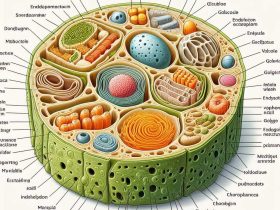Vermicompost is a bio-fertilizer, which is made by decomposing organic wastes by earthworms or other insects. Vermicompost is odorless, clean and organic material, which contains sufficient amounts of nitrogen, potash and potassium and many essential micro-nutrients for plant growth.
Vermicompost is the most preferred nutrient source for organic farming. It is compatible with crops and the environment, and is a recycled organic product. With the use of more chemical fertilizers, the level of bacterial carbon in the soil is constantly decreasing and the indiscriminate use of agricultural chemicals is also destroying the soil organisms.
Therefore, in order to preserve soil fertility in the future and to maintain its continuity, there is an urgent need for bacterial fertilizers. Vermicompost has a special place in germicides, because the method of preparing it is simple and the quality is much better.
Benefits of Vermicompost

Vermicompost is a good type of compost and has proved to be more beneficial than ordinary compost or cow dung. It has the following advantages in using it –
By spreading the vermicompost in the ground, the land becomes friable and fertile. This develops a favorable environment for the roots of plants.
Land is a medium that contains many bacteria which keep it alive. These bacteria need carbon in the form of food. Vermicompost increases the organic matter from the soil and provides a continuum of organic activity in the soil.
Vermicompost contains abundant and balanced amounts of essential nutrients.
The soil becomes brittle by the use of vermicompost, which increases its capacity for nutrient and water conservation, and the movement of air is also good in the soil.
Vermicompost is made from garbage, dung and crop residue, hence reduces dirt and protects the environment.
How to make earthworm compost / Vermicompost?

Earthworm manure/Vermicompost can be produced in pits made of 6 X 3 X 3 feet, or in wooden boxes or plastic crates. Such a system has to be made in a plastic crate or wooden box, so that water does not stop in it. For this, 6 to 9 holes of the size of a centimeter radius are made for drainage, after this, fill the pit, or wooden box or plastic crate in this way, like-
First lay a three inch thick layer of small pieces of brick or stone of two to three inches size.
Now spread a layer of sand about three inches thick on the layer of this stone.
Lay a layer of fine loam at least 6 inches thick on top of this layer of sand.
Moisten the soil 50 to 60 percent by spraying water over a thick layer of soil, then leave it at the rate of 1000 earthworms per square meter.
After this, put cow dung or dung on the thick layer of soil at a distance of 8 to 10 places and then lay a thick fold of three to four inches of dry leaves, grass or straw on it.
Now to cover it, sacks of sack, palm or coconut leaves should be used and it should be covered. In this way, the vermibed and earthworms become the living space. Keep pouring water on it every day, so that the soil remains moist, if the cow dung ends in it, then put a little dung in it, do this process for thirty days.
After thirty days, remove the sacking sacks, palm or coconut leaves, and add two to three inches thick layer of vegetative waste or dry vegetation with a mixture of green vegetation in the ratio of 60:40. Small piles of 8 to 10 dung are kept on top.
While adding this waste, plastic, metal and glass pieces should be removed from it. Then, water should be sprayed time to time.
Use this waste twice a week till the pit is filled and keep spraying water every day.
Earthworm manure is ready 45 days after the pit is filled. In these 45 days, keep turning the garbage waste once a week and stop giving water, stop giving water on the 45th day, after two to three days earthworms will move to the vermibed.
Take out the earthworm compost (vermicompost) and stack it in the stove, by doing so, the remaining earthworms in the compost will move to the lower part of the compost.
Now remove the above earthworm manure (vermicompost) and you can remove the earthworms and use them again. To use earthworm manure (vermicompost) as per need, dry it in open air and fill it in a plastic bag with 20 to 25 percent moisture.






Leave a Reply